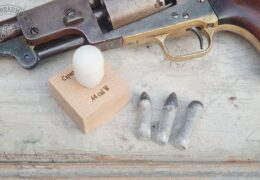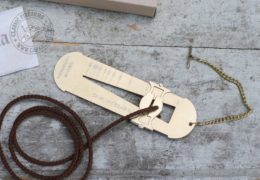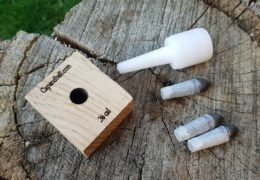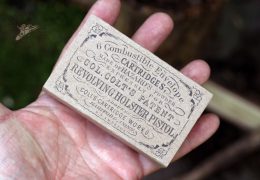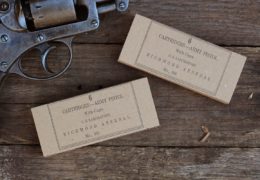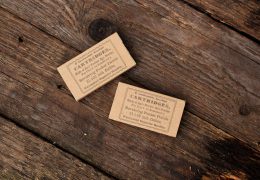Shooting the Feldstutzer to 100-300 meters
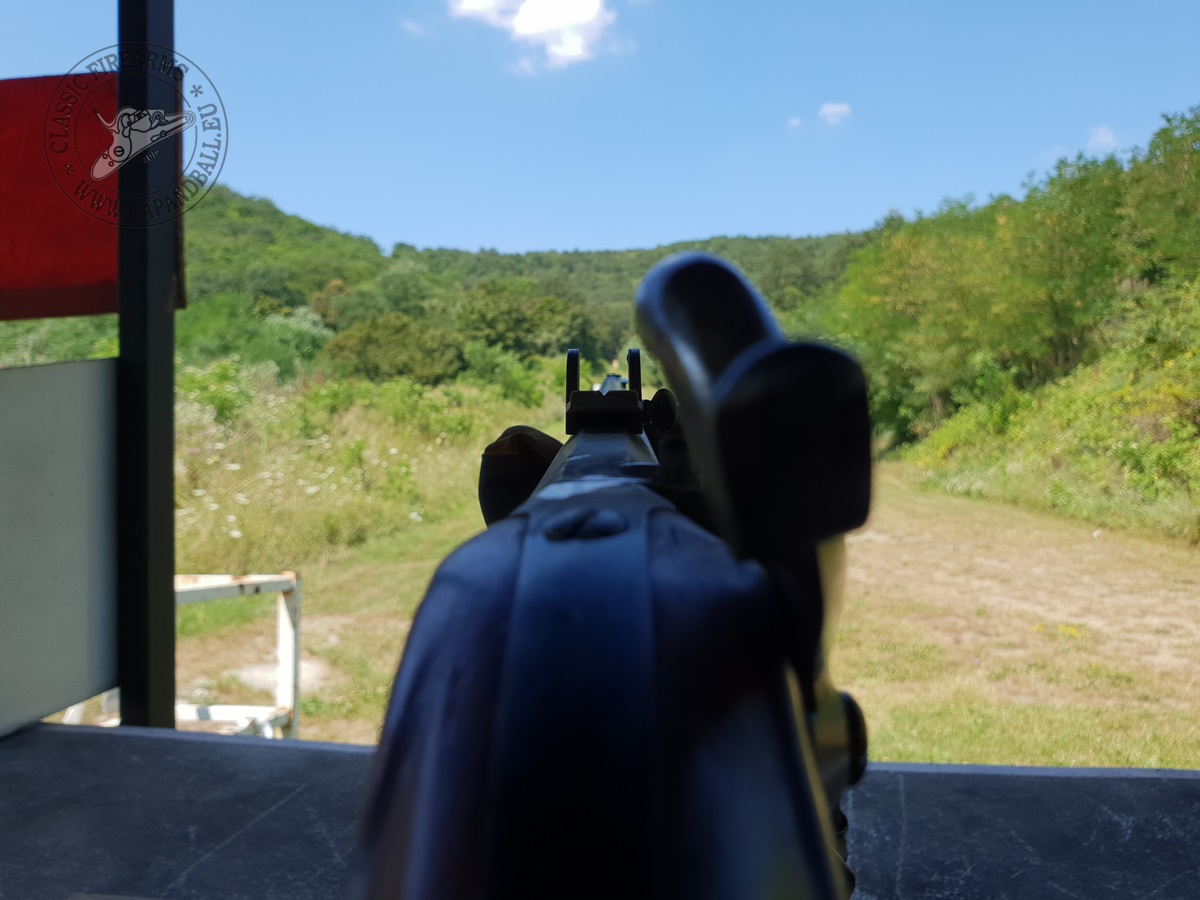

Sight picture of the Feldstutzer. Note how small the 300 m target is thru the sights.
What is considered long range shooting is still a debate today. In muzzle loading disciplines we consider all competitions under 100 m short rand and all other long range. From a mid 19th century tactical point of view short range should be all ranges under the traditional tactical shooting distance of the muzzle loaders (under 300 paces or 225 meters). All other can be considered long range. The goal of my first 50 m test was to choose the right cartridge for further tests. The second step was to compare the performance of my rifle and cartridge to the contemporary sources.
Testing the rifle’s accuracy at 50 meters can only be the beginning of the test shooting project. This rifle was intended to be shot at larger distances. The project was started with 100 m shooting shot the same way: from bench, from a soft shooting rest. I planned to shoot 5 shot groups, but I soon realized that shooter’s errors are likely to be happen at larger distances even if the rifle is shot from a rest. Therefore I decided to fire 6 shots and count the 5 best as the group.
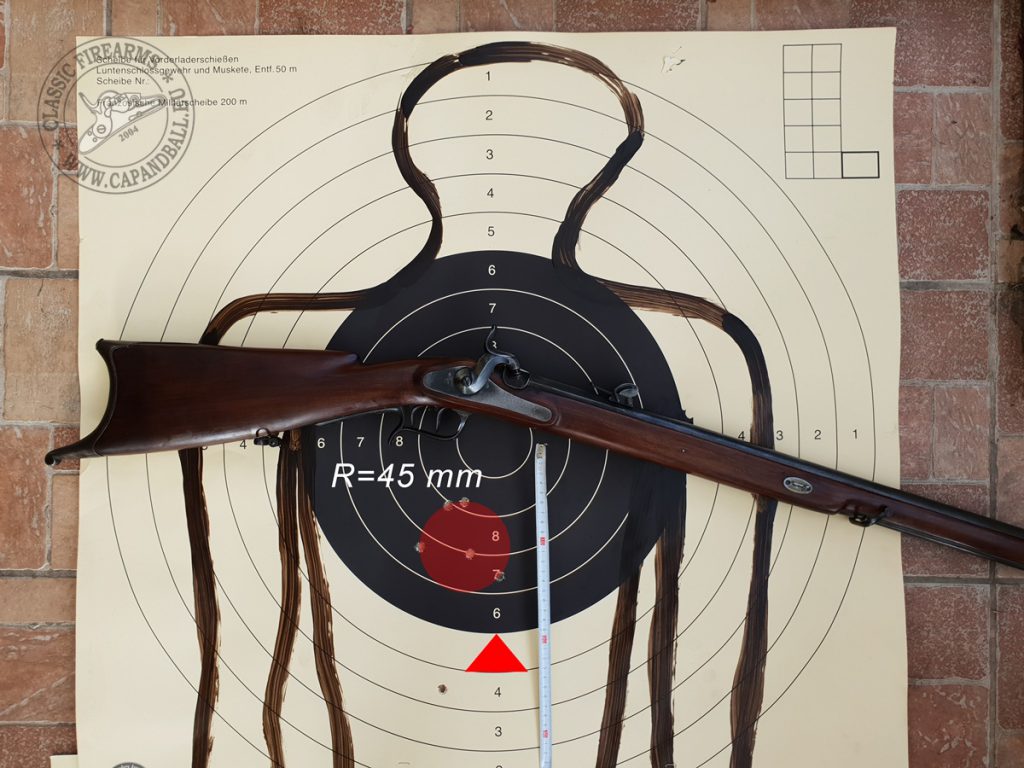
The group at 100 m
At each distances the accuracy was remarkable: at 100 meters (133.3 paces) the radius of the group was 45 mm, the sight was set to the lowest possible position: this setting is below the 200 paces marking. The height of the rear sight to the top of the bore was 5.86 mm. The bullets were impacting 9 cm above the point of aim.[1] I was aiming at the centre bottom of the black area to get a clear sight picture. The diameter of the black area of MLAIC 200 m French Military Target used for the test is 400 mm. This is somewhat larger than what is comfortable for aiming at this distance as it is seems too large to jus pin it on the top of the front sight.
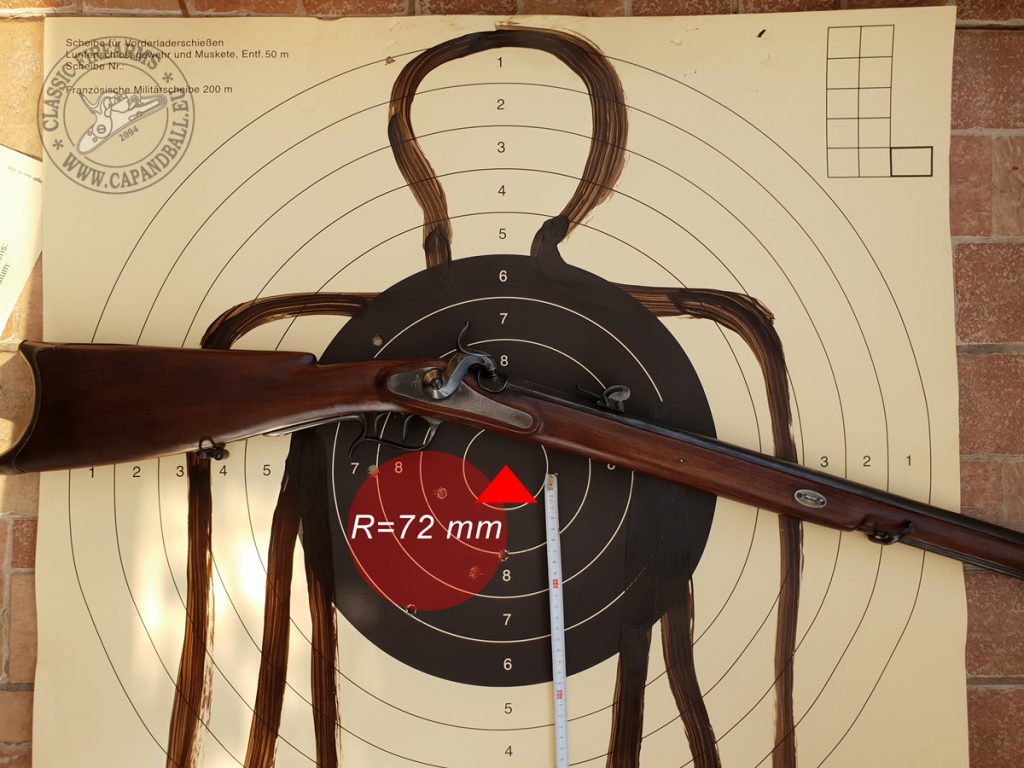
The group at 200 m.
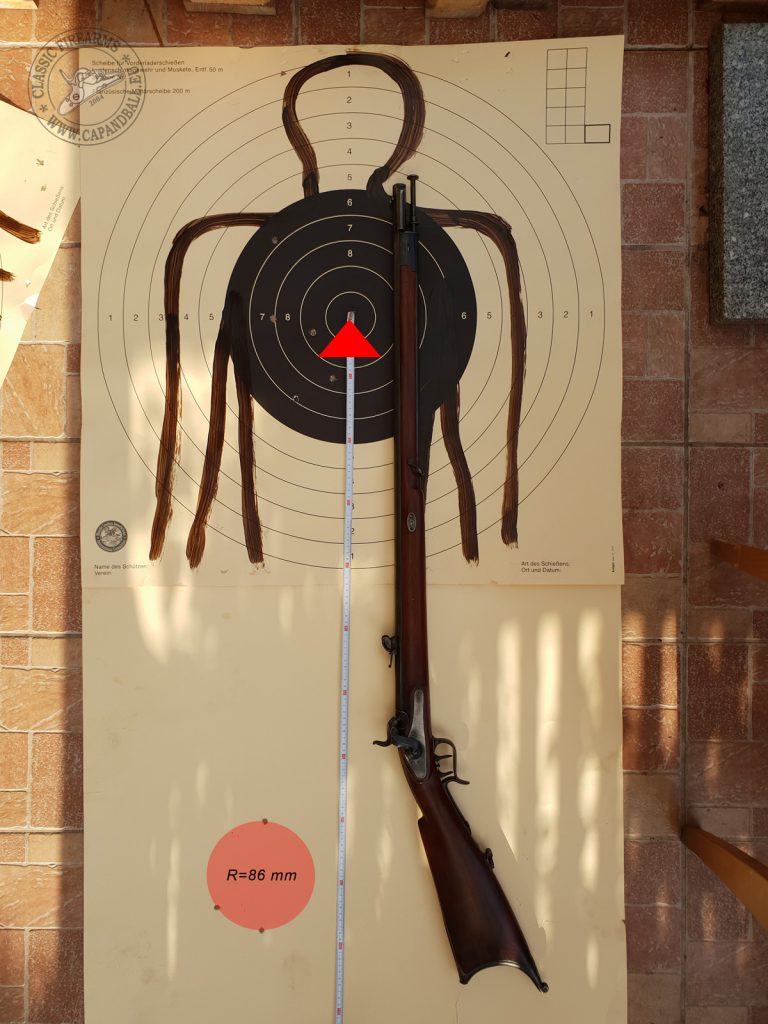
The (incomplete) tests at 300 m
At 200 meters (266.6 paces) the radius of the group was 72 mm. The sight was set to 300 paces (8.10 mm height to the top of the bore). The bullets were impacting 6 cm below the point of aim with aiming to the centre of the bull. At this distance it was easier to aim the centre of the black as it is small enough to place the sights in the dead centre.
My 300 m (400 paces) tests cannot be considered complete as I ran out of cartridges and only 4 left for this distance. I am just sharing these results as an indication for continuing the tests later. I set the sight to 400 paces distance (9.35 mm elevation). I fired 3 shots with this sight setting, resulting a group with a radius of 86 mm, 89 cm below the point of impact. As I was not able to see the bullet holes thru my spotting scope I elevated the sight to 500 paces (11.31 mm) to fire the last shot as a test. I impacted 37.5 mm below the point of aim (centre of the bull) in line with the centre of the target. Although this shot was obviously out of the group it still proved the accuracy of the rifle.
Summary of the test shootings
The accuracy of this rifle is just excellent. We can state that this rifle can hit the head of the enemy individual soldier up to 300 meters (400 paces). The graduation of the sight however is not consistent with the ballistics of the Buholzer cartridge. This bullet clearly needs more elevation than the values indicated on the rear sight. The limit of better accuracy is not the bore or the cartridge but the rear sight. The “V” shaped notch on this sight is just too large making it hard to centre the front sight at larger distances. A better rear sight could improve the capabilities for a target shooter, but of course, the military use of the rifle has different demands.
Let’s compare the data of my test shootings with the historical data we have access to:
| Shooting tests of the writer[2] | Shooting tests from 1862[3] | |
| 100 m | 45 mm | |
| 150 m (200 paces) | 80 mm | |
| 200 m | 72 mm | |
| 300 m (400 paces)[4] | 86 mm | 170 mm |
Although the distances I tested the rifle at are somewhat different than the ranges of the original source it is clearly visible that I was able to shoot better groups. This supports the fact that the contemporary sources did not exaggerate the capabilities of the Feldstutzer.
Balázs Németh, 2018.
Part 1: The Model 1851 Feldstutzer and its impact on rifle development – Part 1
Part 2.: The Swiss Feldstutzer – Part 2: recreating the Model 1851 cartridge
Part 3: The M 1856 and M 1863 cartridges and range tests of the Feldstutzer
Part 4: Shooting the Feldstutzer to 100-300 meters
Part 5: Terminal ballistics of the Buholzer cartridge
[1] Centre of the group
[2] Radius of the group
[3] Anonymous: Das Deutsche Wehr- und Schützenwesen. Darmstadt, Leipzig, 1862. p40
[4] Incomplete test as only 3 shots were evaluated instead of 5.


